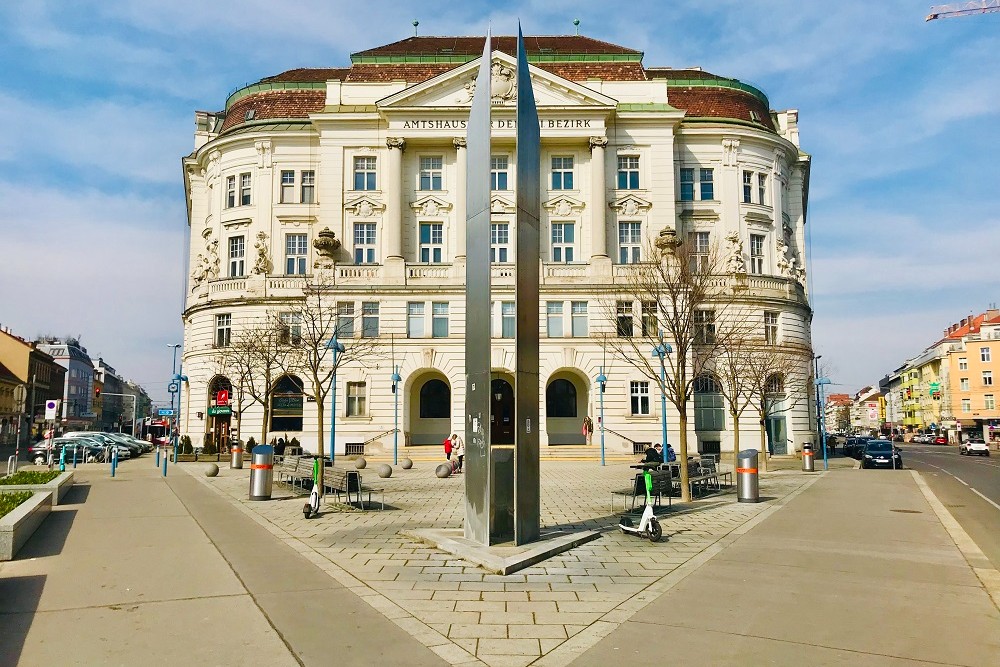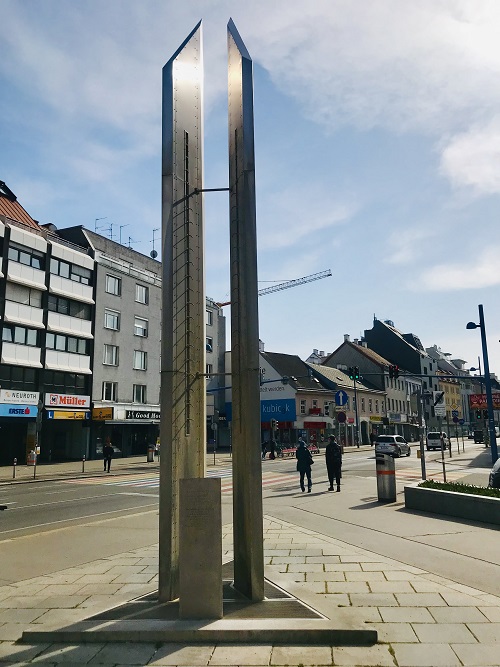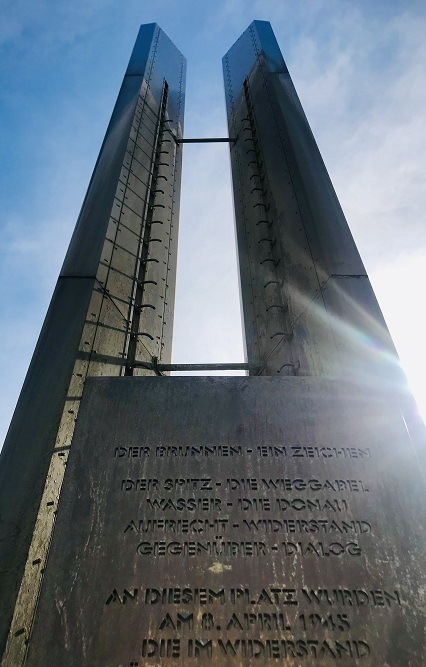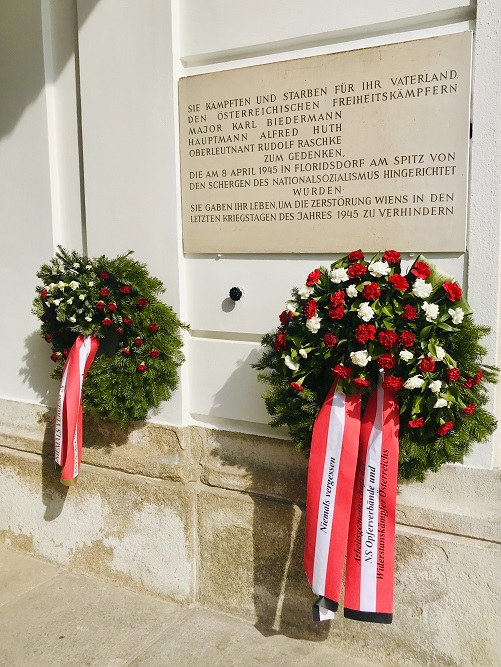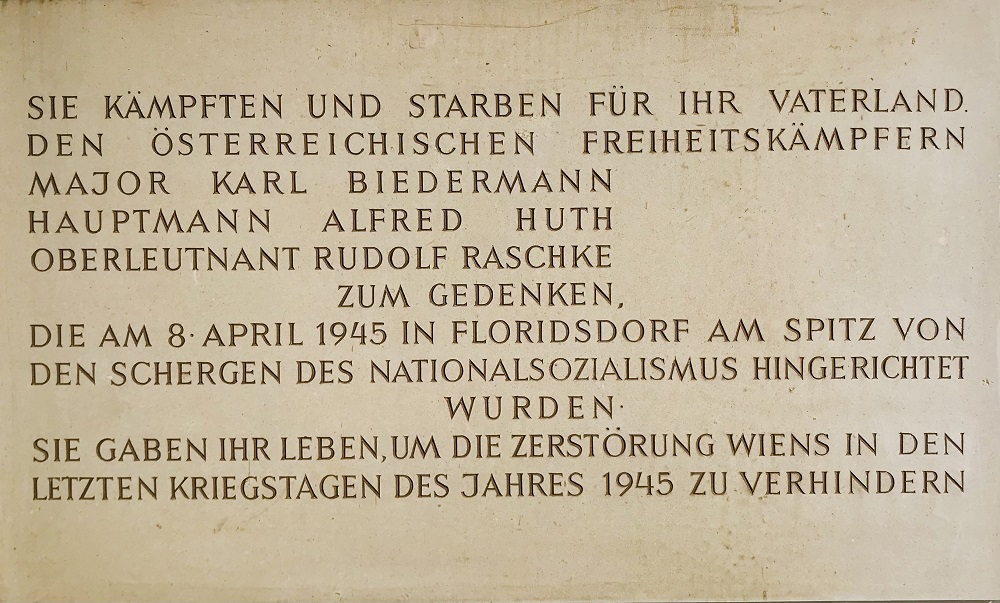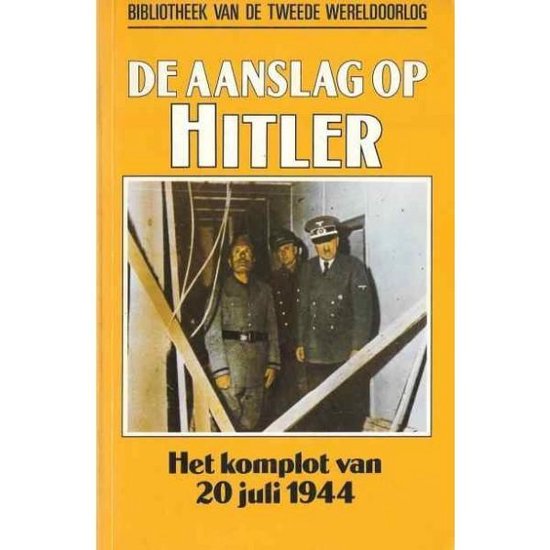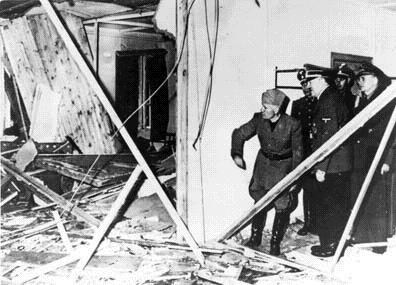Operation Radetzky Memorial
On 19 March 1945, Hitler issued what became known as the "Nero Decree" — the planned destruction of all infrastructure within the German Reich. Operation Radetzky was the code name given to a defensive plan organized by a group of Austrian opponents of the Nazi regime to surrender the city of Vienna to the advancing Soviet army. The plan involved four major players: Major Carl Szokoll, Major Karl Biederman, Lieutenant Rudolph Raschke, and Second Lieutenant Alfred Huth. Today, the Operation Radetzky Memorial stands in their honor.
In Vienna, German troops were ordered to destroy the city’s vital infrastructure for transportation, information, industry and public utilities. This would include bridges, railway stations, water plants, electrical plants, gas plants, important road corridors, public transportation networks – in short anything and everything the enemy could use to help them advance their goals.
Viennese Major Carl Szokoll was instructed to draft the plans for Vienna’s self-destruction. However, this was not Szokoll’s first rodeo. In July 1944, Szokoll participated in Colonel Claus von Stauffenberg’s plot to assassinate Hitler at the Wolf’s Lair and to assume power. During Operation Valkyrie, Stauffenberg detonated a bomb in the presence of Hitler; however, Hitler miraculously survived the blast. Believing incorrectly that Hitler had been killed, Szokoll and other plotters rounded up the leading SS and Nazi officials in Vienna.
During the ensuing investigation, Szokoll was able to convince the Gestapo that he had simply been following orders and was released. Szokoll was promoted to Major and was tasked with defending Vienna from the advancing Soviets. In Spring 1945, Szokoll joined Operation Radetzky and became one of the key players.
For Operation Radetzky to succeed, Szokoll and other military commanders in Vienna needed to pretend they were making preparations to destroy the city, while actually making plans to save it from annihilation. Szokoll worked closely with the Austrian Resistance group, the O5, to successfully contact Soviet leadership. Separately, the Allies agreed to not bomb Vienna during the turnover.
On the evening of 4 April, Major Karl Biedermann was betrayed and arrested by the Gestapo. Biedermann’s role in Operation Radetzky, which had now been partially uncovered, was to secure the city’s bridges. The Gestapo frantically investigated to determine the goals of Operation Radetzky. The Operation continued as planned.
On 5 April, Soviet planes dropped red flares to signal their arrival overhead. The resistance fighters responded with green flares to mark the beginning of Operation Radetzky. Lieutenant Rudolf Raschke, and Second Lieutenant Alfred Huth were arrested while trying to commandeer the Bisamberg radio tower on the northern edge of Vienna.
Szokoll was warned, evaded arrest and fled to the Soviet 9th Guards Army command post at Purkersdorf where he briefed the Soviets on the failure of the operation.
On 8 April, the Nazis hung Biedermann, Raschke, and Huth from the lampposts at the Am Spitz square in Floridsdorf. Signs attached to their bodies read "I have made a pact with the Bolsheviks."
In addition to the planned surrender, Szokoll and his team provided the Soviets with the the German battle plans for the defense of Vienna as well as the locations of munitions and other key military details. Suing this intelligence, the Soviets surprised the Nazis by advancing from the West and North rather than the South.
The Battle for Vienna lasted from 6-13 April 1945. The rapid Soviet advance prevented the Nazis from creating a siege situation and saved numerous lives and the left Vienna largely intact.
Today, the Operation Radetzky Memorial stands in the Am Spitz square to recognize the bravery of Major Karl Biederman, Lieutenant Rudolph Raschke, and Second Lieutenant Alfred Huth. There is also plaque on the main entrance of the Town Hall in Am Spitz.
Do you have more information about this location? Inform us!
Source
- Text: Raymond White
- Photos: Raymond White
- Whitehousetravel.com
Related books
Nearby
Museum
- Documentation Centre "Opfer des Österreichischen Freiheitskampes 1938-1945" - Wien
- Documentation Centre of Austrian Resistance - Wien
- Air Raid Shelter Vienna - Wien
Point of interest
- Air Raid Shelter Floridsdorf - Wien
- Männerheim Building - Wien
- Cannonball Schloss Hirschstetten - Wien-Hirschstetten
Monument
- Concentration Camp Vienna-Floridsdorf - Wien
- Memorial General-Major Johann Freiherr von O’Brien - Wien-Floridsdorf
- Memorial Russian War victims - Wien
Cemetery
- Soviet War Graves Jedleseer Friedhof - Wien
- Soviet War Graves Stammersdorf - Wien
- Imperial Crypt Vienna - Wien
Remembrance Stone
- Remembrance Stones Joseph-Samuel-Park - Wien-Floridsdorf
- Remembrance Stone Gebhardtgasse 3 - Wien-Döbling
- Remembrance Stone Scheibengasse 1 - Wien-Döbling
